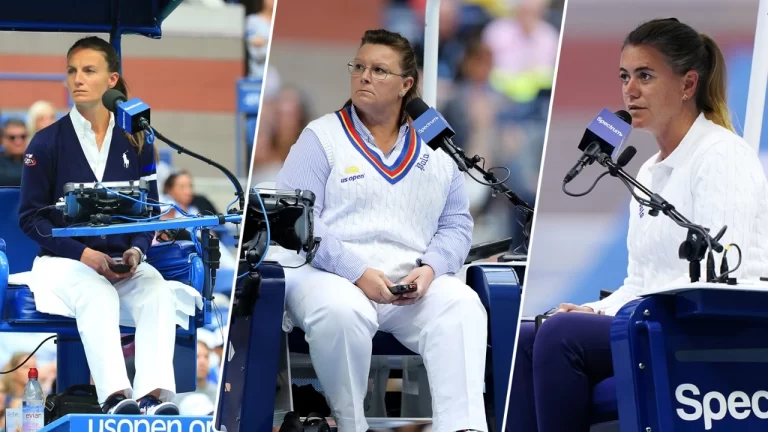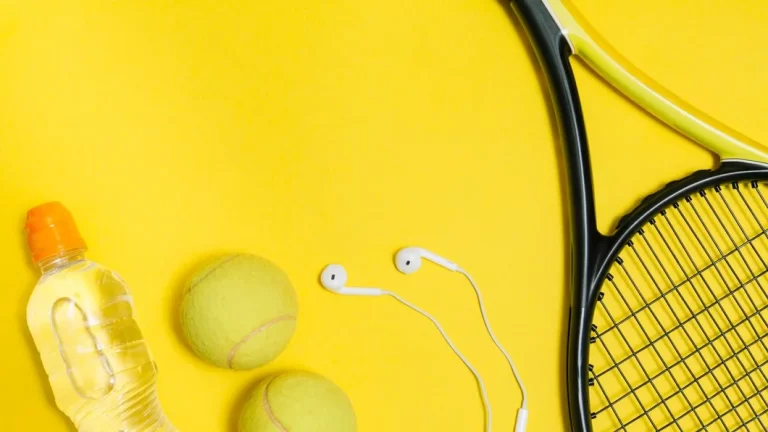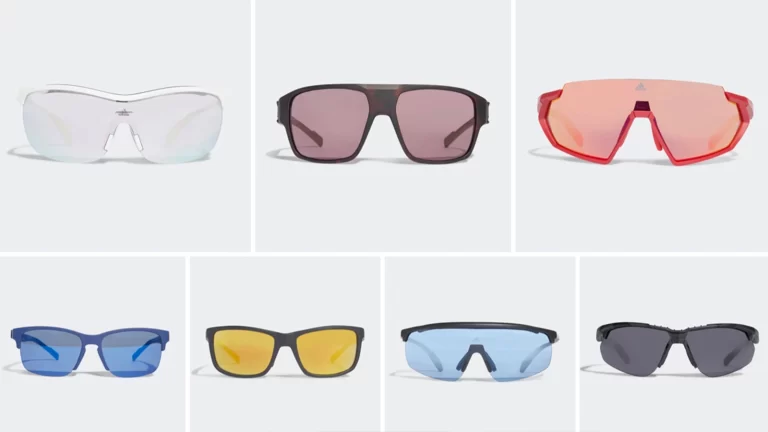How To Choose The Right Tennis Racket?
“How To Choose The Right Tennis Racket?” Choosing the right tennis racket is important for any tennis player, whether you’re a beginner or an experienced player. With the wide variety of options available in the market, it can be mind-blogging to find the perfect racket that suits your playing style and skill level. However, by considering a few key factors, you can make an informed decision and select a racket that enhances your performance on the court.
In this guide, we will explore the essential aspects to consider when choosing a tennis racket, including racket head size, weight, balance, grip size, and string pattern. By understanding these factors, you’ll be well-equipped to make a confident choice and improve your game. So, let’s dive in and discover how to choose the right tennis racket for you.
Also Read: Are Tennis Shoes Non-slip?
Also Read: How Tennis Rankings Work?
Selecting The Right Tennis Racket For Your Skill Level
It’s important to note that the ideal head size and weight of a racket can vary depending on an individual’s playing style, skill level, and personal preference.
Choosing the right tennis racket for your skill level is important for improving your game and preventing injuries. Here are some tips “How To Choose The Right Tennis Racket?”
Beginner Tennis Players
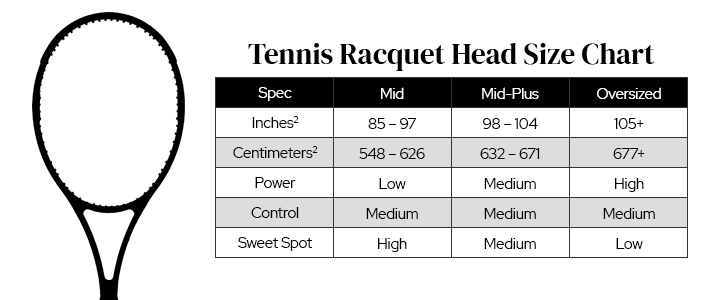
Intermediate Tennis Players
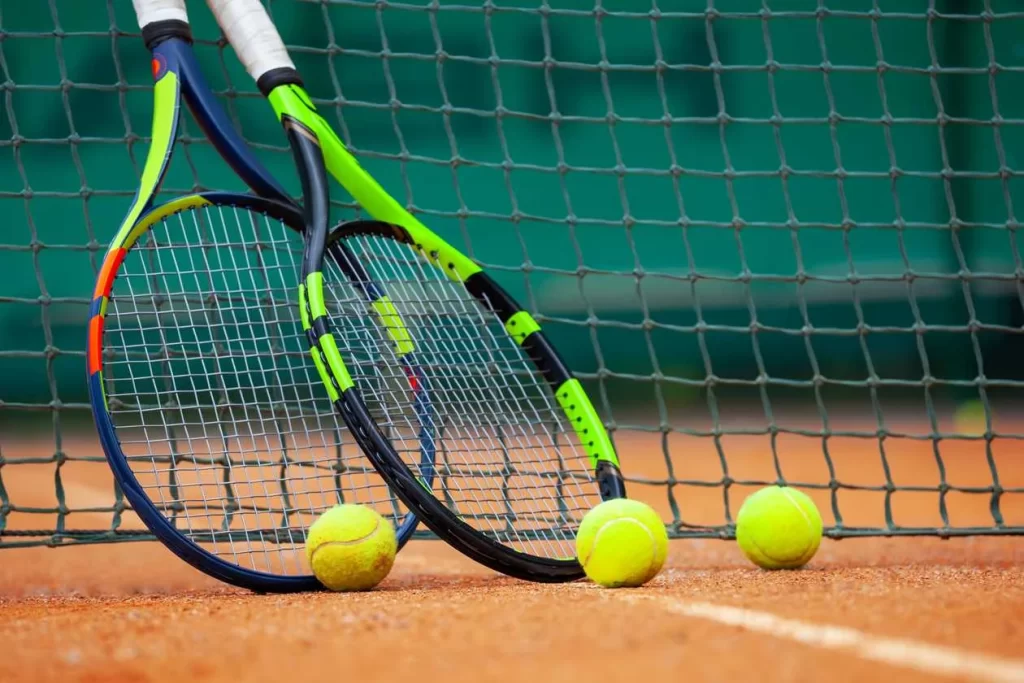
Advanced Tennis Players
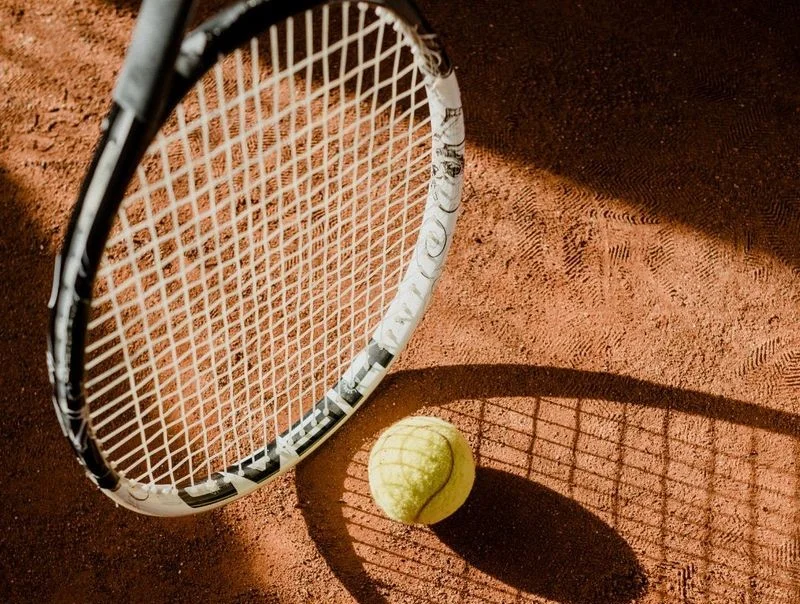
here is a table that well describes tennis rackets for different skill levels
| Skill Level | Head Size (sq in) | Weight (oz) | Balance | String Pattern |
| Beginner | 100+ | 9-10 | Head-light | 16×19 or 16×18 |
| Intermediate | 98-100 | 10-11 | Even or head-heavy | 16×19 or 18×20 |
| Advanced | 95-98 | 11+ | Head-heavy | 16×19 or 18×20 |
Additional Notes
Beginners should focus on finding a racket with a large sweet spot and a lightweight frame.
Intermediate players should start to look for a racket with a smaller head size and a slightly heavier frame.
Advanced players should choose a racket with a head size that matches their playing style and a weight that provides them with the power and control they need.
The string pattern is a matter of personal preference. Open string patterns provide more spin and power, but less control. Dense string patterns provide better control, but less spin and power.
Here are some additional tips for selecting a tennis racket
- Consider your grip size. The right grip size will help you hold the racket comfortably and prevent injuries. You can measure your grip size by measuring the distance from the middle crease of your palm to the tip of your ring finger.
- Consider your budget. Tennis rackets can range in price from around $50 to $500. Choose a racket that fits your budget and your needs.
- Get your racket strung by a professional. This will ensure that the strings are at the correct tension and that the racket is properly balanced.
Once you have chosen a tennis racket, be sure to practice with it regularly to get used to the feel and performance.
Factors to Consider When Choosing a Tennis Racket
The head size and weight, there are several other factors to consider when choosing a tennis racket. Here are a few more important consideration of “How To Choose The Right Tennis Racket?”
Balance
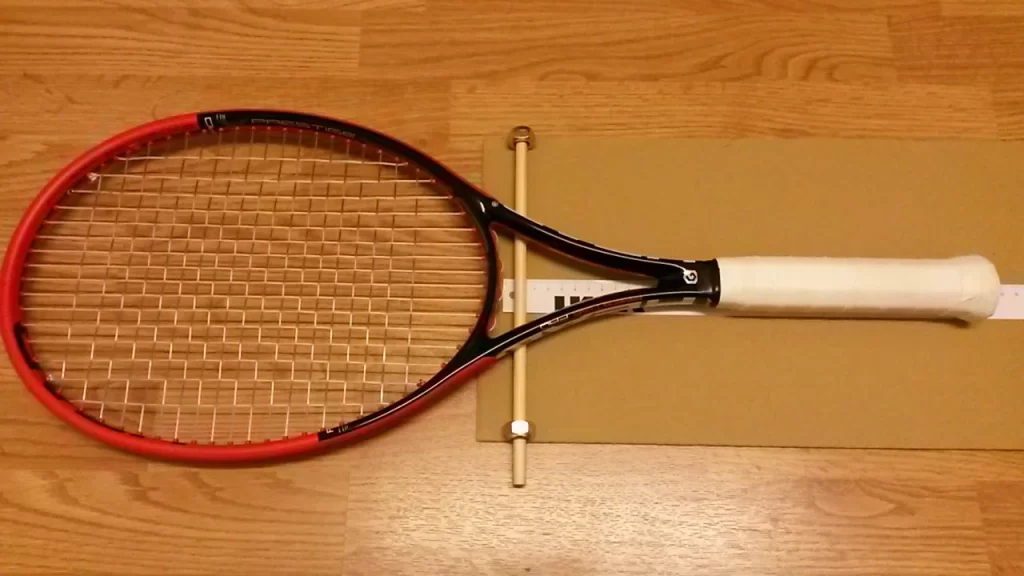
Balance: The balance of a racket refers to the distribution of weight along its length. Rackets can be categorized as head-heavy, head-light, or evenly balanced. Head-heavy rackets provide more power and stability, while head-light rackets offer greater maneuverability and control. Evenly balanced rackets aim to strike a balance between power and control.
String Pattern
The string pattern refers to the number of main and cross strings on the racket head. Rackets typically have either an open string pattern (fewer strings, larger gaps between them) or a closed string pattern (more strings, smaller gaps). Open string patterns provide more spin potential and power, while closed string patterns offer better control and durability.
Stiffness and Flexibility
Stiffness/Flexibility: The stiffness or flexibility of a racket affects its feel and performance. Stiffer rackets tend to provide more power and control but can be less forgiving on off-center hits. More flexible rackets offer better shock absorption and can be more forgiving, but they may sacrifice some power and control.
Grip Size
Grip Size: The grip size refers to the circumference of the racket handle. Choosing the right grip size is crucial for comfort and control. A grip that is too small can lead to wrist discomfort and lack of control, while a grip that is too large can cause difficulty in maneuvering the racket.
Material And Construction
Material and Construction: Rackets are made from various materials such as graphite, carbon fiber, or a combination of materials. The construction and quality of materials used can impact the racket’s performance, durability, and feel.
Remember, the best racket choice ultimately depends on your playing style, skill level, and personal preference. It’s always a good idea to try out different rackets or seek advice from a tennis professional to find the perfect match for your game.
Choosing A Racket For Your Swing Style
If you’re wondering how to choose the right tennis racket? it’s important to consider your swing style in order to maximize your performance on the court. Different swing styles call for specific racket characteristics that can optimize power, control, and maneuverability. For those with a powerful swing who prefer to generate their own power, a head-heavy racket with a more open string pattern can be the ideal choice, as it provides the extra power and spin potential needed.
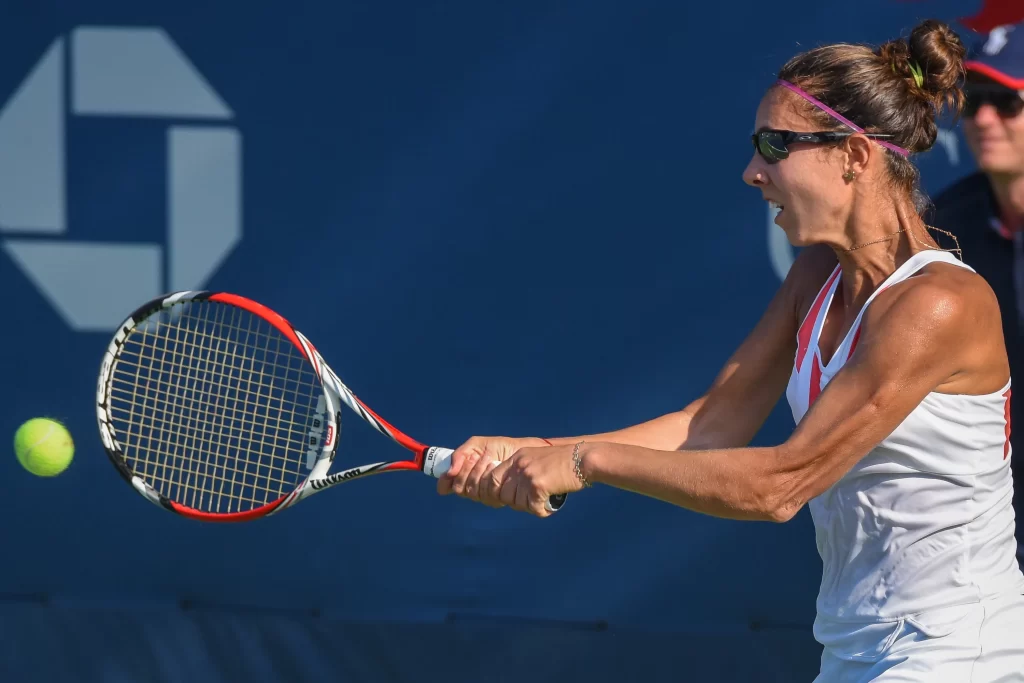
On the other hand, if you have a more controlled and precise swing, a head-light racket with a closed string pattern can offer better control and accuracy. It’s important to assess your swing style and consider factors like balance, string pattern, and stiffness/flexibility to find the perfect racket that complements your unique playing style.
Tennis Racket Construction
Tennis rackets have come a long way since their early wooden days. Today’s rackets are made from a variety of materials, including graphite, carbon fiber, and titanium. These materials are lightweight and strong, allowing for rackets that are more powerful and maneuverable than ever before.

The frame of a tennis racket
A tennis racket’s structure is commonly crafted from either a singular material or a combination of multiple materials. The frame’s primary function is to transmit the player’s power to the ball, while also influencing the racket’s balance and tactile sensation. Graphite is the most common material used in racket frames, as it is lightweight, strong, and relatively inexpensive. Carbon fiber is another popular material, as it is even stronger and lighter than graphite. However, it is also more expensive. Titanium is sometimes used in racket frames to add strength and stiffness.
The Head Of Tennis Racket
The head of a tennis racket is the part of the racket that comes into contact with the ball. The head is typically made of the same material as the frame, but it can also be made of a different material, such as Kevlar or fiberglass. These materials are often used to add durability to the head and to reduce vibration.
The Strings Of A Tennis Racket
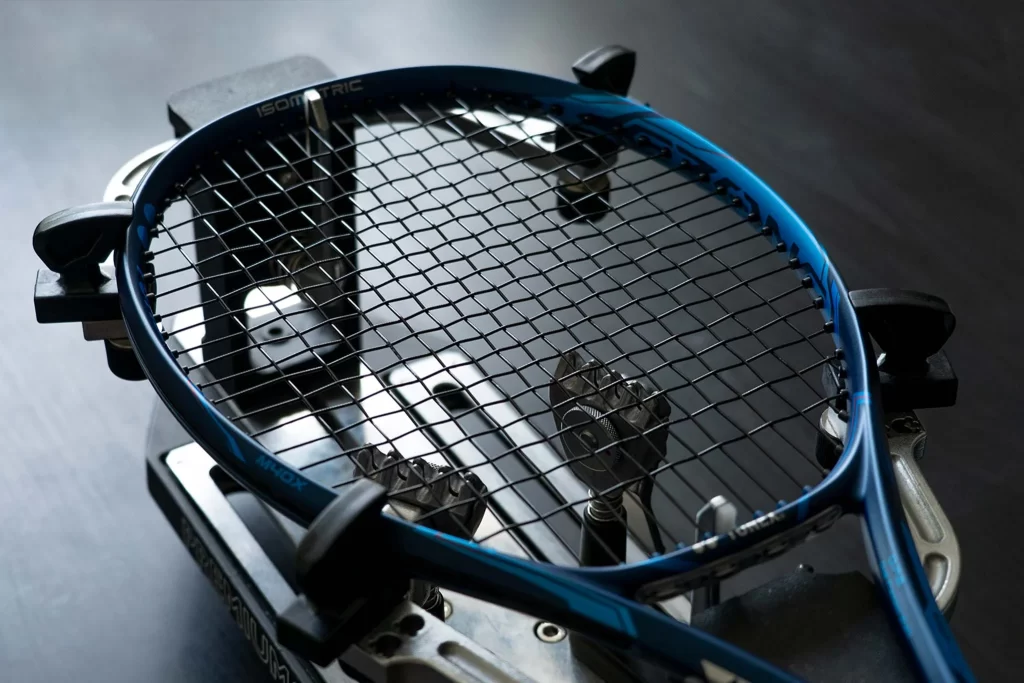
The strings of a tennis racket are made of a variety of materials, including synthetic gut, polyester, and multifilament. Synthetic gut is the most popular type of string, as it is relatively inexpensive and offers a good balance of power, control, and spin. Polyester strings are more durable and offer more spin than synthetic gut, but they can be less powerful. Multifilament strings are the most comfortable type of string, but they are also the least durable.
The Shaft Of A Tennis Racket
The section that links the head to the handle of a tennis racket is known as the shaft. Usually, the shaft is constructed using the same material as the frame, although it can also be made from alternative materials like steel or aluminum. The shaft contributes to the overall rigidity and flexibility of the racket. A stiffer shaft will provide more power, while a more flexible shaft will provide more control.
The Handle Of A Tennis Racket
The handle of a tennis racket is typically made of wood, synthetic rubber, or leather. The handle is responsible for providing a comfortable and secure grip for the player.
The construction of a tennis racket is a complex process that involves a variety of materials and manufacturing techniques. However, the basic principles are the same: to create a racket that is lightweight, strong, and durable, and that provides the player with the power, control, and spin they need to succeed on the court.
Conclusion
“How to choose the right tennis recket?” is an important decision that can greatly impact your performance on the court. By considering factors such as head size, weight, balance, string pattern, stiffness/flexibility, grip size, and material construction, you can find a racket that suits your playing style, skill level, and personal preferences. It is important to remember that there is no one-size-fits-all solution, and the best racket choice will vary from person to person. Experimenting with different rackets and seeking advice from tennis professionals can help you find the perfect match that enhances your game and brings you joy on the tennis court.


